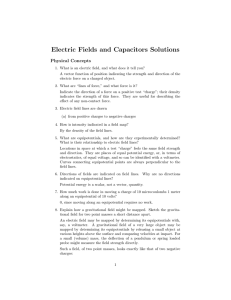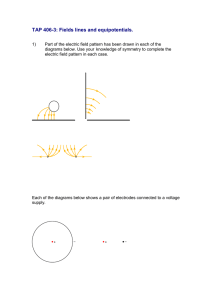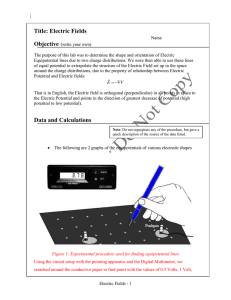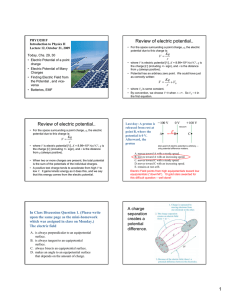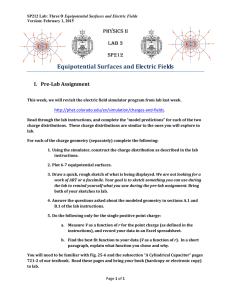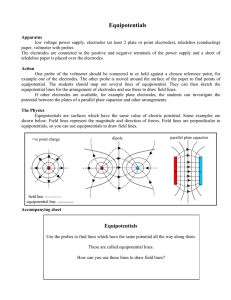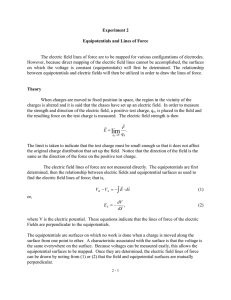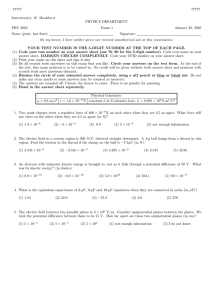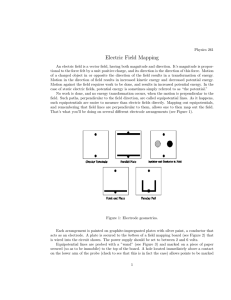Summary of Class MW 06/ TR 05 8.02 Topics Related Reading:
advertisement
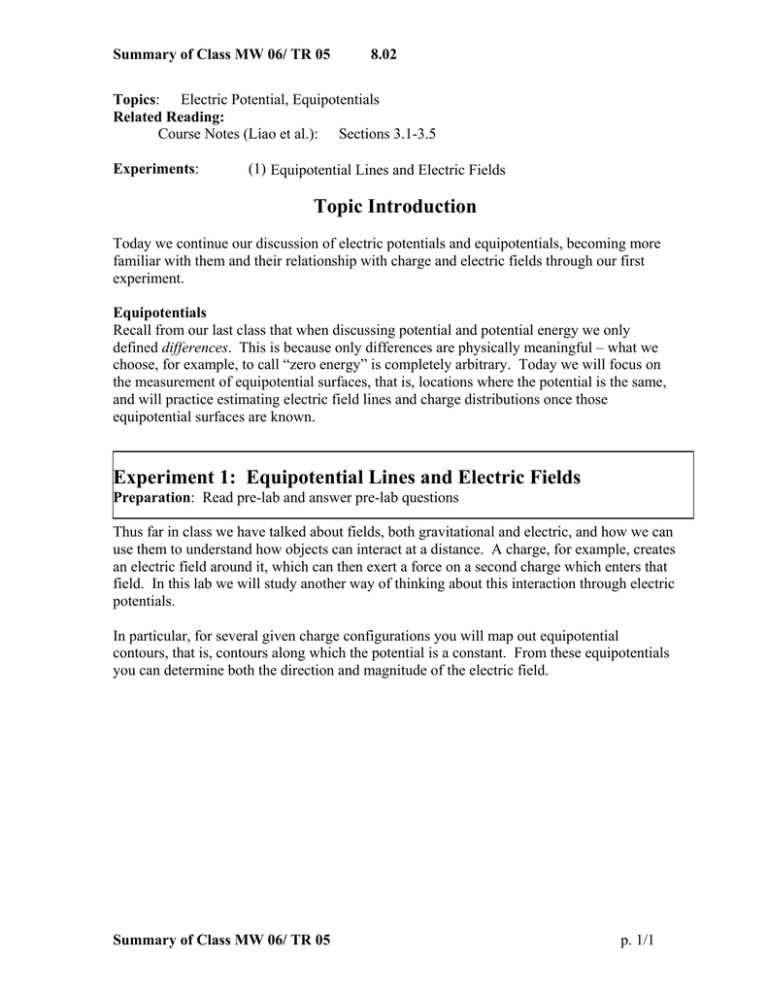
Summary of Class MW 06/ TR 05 8.02 Topics: Electric Potential, Equipotentials Related Reading: Course Notes (Liao et al.): Sections 3.1-3.5 Experiments: (1) Equipotential Lines and Electric Fields Topic Introduction Today we continue our discussion of electric potentials and equipotentials, becoming more familiar with them and their relationship with charge and electric fields through our first experiment. Equipotentials Recall from our last class that when discussing potential and potential energy we only defined differences. This is because only differences are physically meaningful – what we choose, for example, to call “zero energy” is completely arbitrary. Today we will focus on the measurement of equipotential surfaces, that is, locations where the potential is the same, and will practice estimating electric field lines and charge distributions once those equipotential surfaces are known. Experiment 1: Equipotential Lines and Electric Fields Preparation: Read pre-lab and answer pre-lab questions Thus far in class we have talked about fields, both gravitational and electric, and how we can use them to understand how objects can interact at a distance. A charge, for example, creates an electric field around it, which can then exert a force on a second charge which enters that field. In this lab we will study another way of thinking about this interaction through electric potentials. In particular, for several given charge configurations you will map out equipotential contours, that is, contours along which the potential is a constant. From these equipotentials you can determine both the direction and magnitude of the electric field. Summary of Class MW 06/ TR 05 p. 1/1

